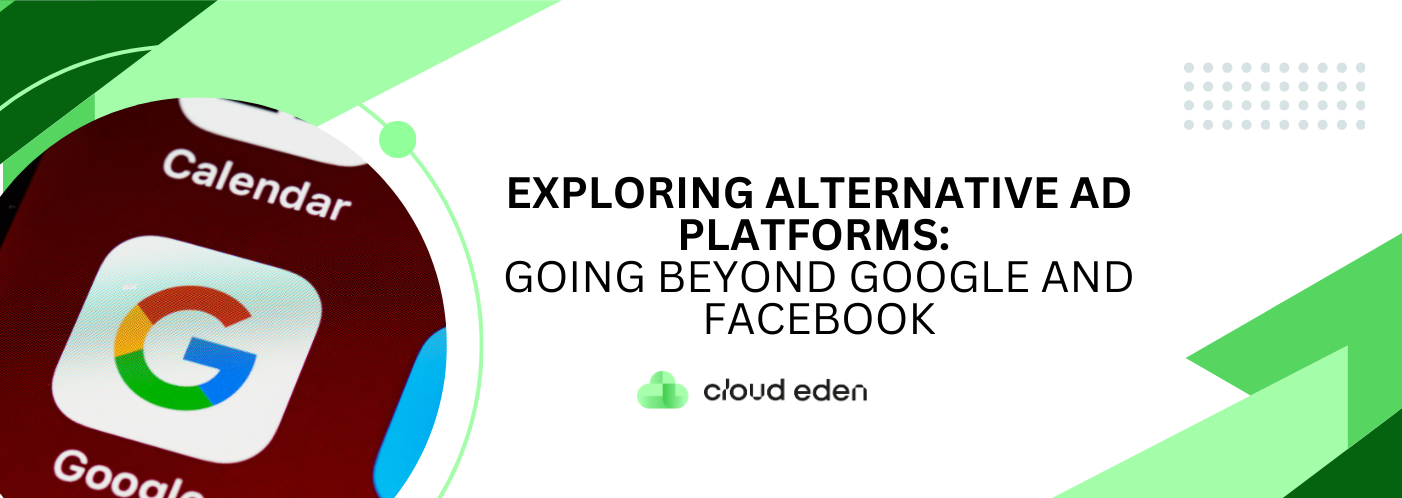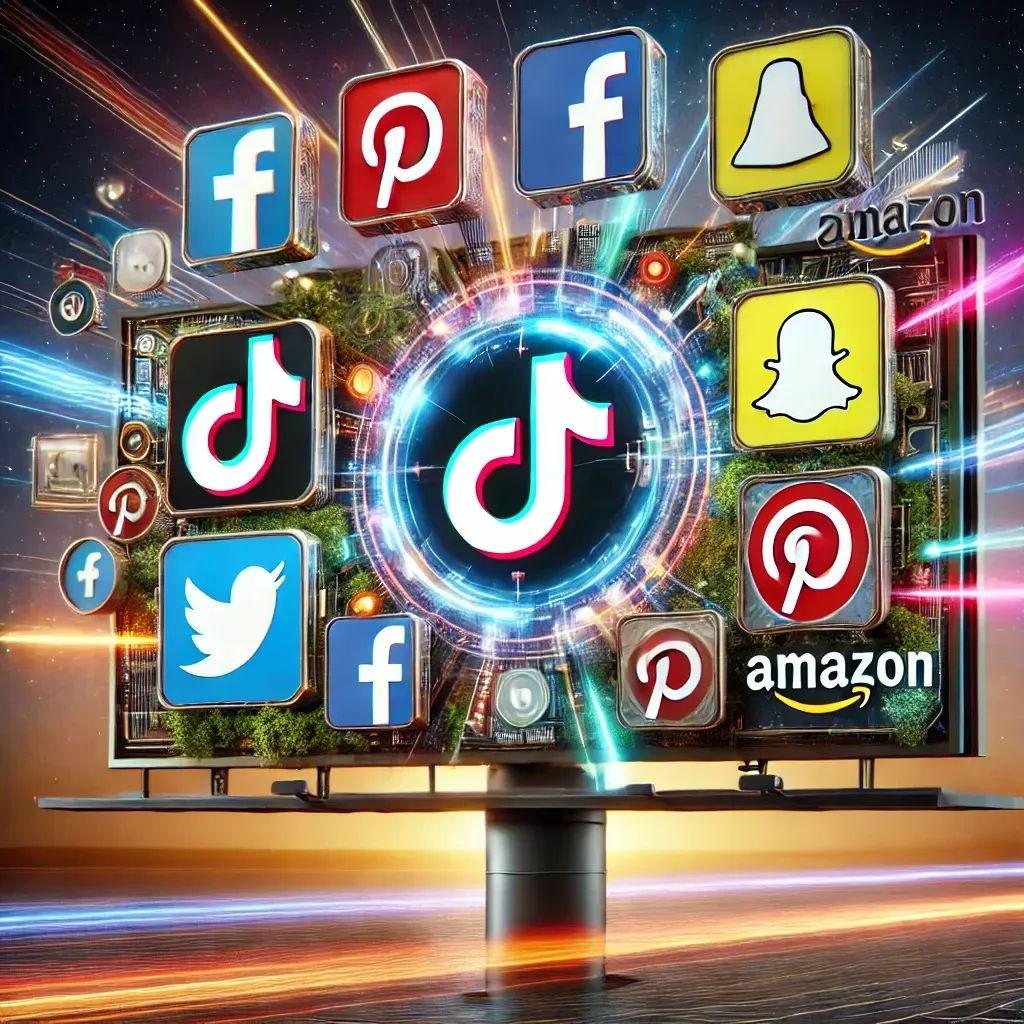Exploring Alternative Ad Platforms: Going Beyond Google and Facebook

Table of Contents
- Introduction
- Why Consider Alternative Ad Platforms?
- Promising Alternatives to Google and Facebook
- TikTok Ads
- Pinterest Ads
- LinkedIn Ads
- Snapchat Ads
- Reddit Ads
- Amazon Advertising
- Programmatic Advertising Platforms
- Streaming Platforms
4. Strategies for Leveraging Alternative Platforms
5. Conclusion
In the world of digital advertising, Google and Facebook have long dominated the landscape. They offer robust tools, vast audiences, and advanced targeting options, making them the go-to platforms for businesses of all sizes. However, their overwhelming popularity also comes with drawbacks: rising ad costs, stiff competition, and ad fatigue. This has led many advertisers to explore alternative platforms that can deliver comparable or even superior results. In this article, we’ll explore some of the most promising alternatives to Google and Facebook, their unique advantages, and how businesses can leverage them to reach new audiences.
Why Consider Alternative Ad Platforms?
Before diving into the specifics, let’s examine why businesses should consider diversifying their advertising efforts:
Reduced Competition: Lesser-known platforms often have fewer advertisers, resulting in lower costs per click (CPC) and more affordable ad placements.
Niche Targeting: Alternative platforms can cater to specific demographics, industries, or interests, offering hyper-targeted campaigns.
Creative Freedom: Many platforms offer unique formats that encourage creativity, allowing brands to stand out more effectively.
Diversification: Relying solely on Google and Facebook can be risky, especially if algorithms change or accounts face unexpected restrictions. Diversifying ensures continuity in your marketing efforts.
Promising Alternatives to Google and Facebook
1. TikTok Ads
Overview: TikTok has quickly become one of the most popular platforms, especially among younger audiences. With its short-form, video-centric approach, it’s ideal for brands looking to connect with Gen Z and Millennials.
Advantages:
Highly engaging video formats.
Advanced algorithmic targeting.
Relatively lower CPC compared to mature platforms like Facebook.
Best For: Brands in fashion, beauty, entertainment, and e-commerce that can create fun, visually appealing content.
2. Pinterest Ads
Overview: Pinterest is a visually-driven platform that’s perfect for businesses in niches like home décor, fashion, DIY, and food.
Advantages:
High purchase intent among users.
Long-lasting ad visibility due to the platform’s pin structure.
Affordable CPC and CPM rates.
Best For: Brands targeting women, creatives, and DIY enthusiasts.
3. LinkedIn Ads
Overview: LinkedIn is the leading platform for B2B advertising, making it an excellent choice for businesses targeting professionals, executives, or specific industries.
Advantages:
Precision targeting based on job titles, industries, and company sizes.
High-quality leads.
Professional audience with significant purchasing power.
Best For: B2B companies, SaaS businesses, and recruiters.

4. Snapchat Ads
Overview: Snapchat remains a favorite among younger audiences, with its ephemeral content and augmented reality (AR) features.
Advantages:
AR-based advertising options for immersive campaigns.
Affordable entry costs.
Strong engagement rates with younger demographics.
Best For: Brands in entertainment, tech, and retail.
5. Reddit Ads
Overview: Reddit offers access to highly engaged niche communities (subreddits) across a broad range of interests.
Advantages:
Contextually relevant targeting through subreddits.
Authentic engagement with active user participation.
Lower competition in many niches.
Best For: Tech companies, gaming brands, and niche products/services.
6. Amazon Advertising
Overview: As one of the largest e-commerce platforms, Amazon offers unparalleled opportunities for brands to advertise directly to shoppers.
Advantages:
High purchase intent.
Integration with product listings for seamless conversions.
Access to Amazon’s vast shopper data.
Best For: E-commerce brands, particularly those already selling on Amazon.
7. Programmatic Advertising Platforms
Overview: Platforms like The Trade Desk, MediaMath, and AdRoll provide programmatic advertising solutions, enabling brands to reach audiences across multiple websites and apps.
Advantages:
Automated bidding for real-time ad placements.
Advanced targeting options (e.g., retargeting, geofencing).
Scalable campaigns across diverse platforms.
Best For: Brands with larger budgets aiming for broad visibility and precise targeting.
8. Streaming Platforms
Overview: Platforms like Hulu, Roku, and Spotify allow brands to deliver ads to highly engaged audiences in streaming environments.
Advantages:
Access to cord-cutters and mobile listeners.
High completion rates for video ads.
Non-disruptive ad experiences.
Best For: Brands in entertainment, lifestyle, and tech looking for premium exposure.
Strategies for Leveraging Alternative Platforms
Understand Your Audience: Each platform caters to specific demographics. Research where your target audience spends their time online.
Tailor Your Content: Repurposing content designed for Google or Facebook won’t always work. Customize your creatives to match the tone and style of the platform.
Start Small: Test campaigns with smaller budgets to assess performance before scaling.
Monitor Analytics: Leverage each platform’s analytics tools to track performance, identify trends, and refine your strategies.
Partner with Experts: Working with agencies or consultants familiar with these platforms can accelerate your success and avoid common pitfalls.
Conclusion
Exploring alternative ad platforms opens up new avenues for brands to connect with their audiences, reduce competition, and achieve better ROI. From TikTok’s dynamic video ads to LinkedIn’s precision targeting, these platforms cater to various needs and niches. By diversifying your advertising efforts, you not only reduce dependency on Google and Facebook but also uncover untapped opportunities.
Cloudofeden.com specializes in crafting tailored marketing strategies for businesses seeking to maximize their reach and ROI across diverse advertising platforms. As a thought leader in the digital marketing space, we’re here to help you navigate the ever-evolving advertising landscape and ensure your brand’s success.
For more insights and personalized guidance, click this link and schedule a consultation today!
Welcome To Our Blog







